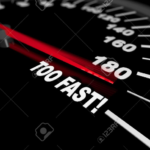As per your requirement, you can add plugins to customize your desire store. However, we assume that you already know about Magento or a Magento store owner who is looking for SEO strategies to optimize the store.
Today from this post, you will learn some powerful SEO strategies to optimize your Magento store.
1. Optimize the Basic Things
First thing first, before improving something, it’s a better idea to audit the current site and fix the errors.
Below are the things you should take care of when auditing the website:
Check all the Redirects:
When you have installed the store, probably you selected the desired version of your store like www or non-www and secured your site later with HTTPS. All the 4 versions of your website should redirect properly to the desired version. Another thing to fix is broken internal links and images.
Canonical:
Every page of your website must contain a unique canonical to get rid of duplicate content issues. Even it indicates Google which version of a page to index. For instance, 4 different versions of your websites are opening but all the versions contain the same canonical. Only the declared canonical version will be indexed by Google.
Sitemap and Robot.txt:
A sitemap is very useful to let Google know about your new pages. If there is no sitemap, generate a new one and submit it through the search console.
Check the robot.txt file. Maybe there are some important pages that are set as disallowed.
Title tags and Meta description:
As the title tags appear on the SERP, they should be well optimized within 50-60 words. Meta description also appears on SERP. Find out the pages that do not have meta descriptions. Add a unique and actionable meta description for every page.
2. Target Low-hanging Keywords First
Not only for the Magento store, a well-researched keyword always helps your pages to rank well for every platform-based website. If your Magento store sells a huge collection of competitive products. Focus on low-hanging keywords that are already ranking on the 2nd page.
For a new page creation if you are looking for keywords, use tools like Google keyword planner, AHREFS, SEMrush to make the list of keywords.
Keep in mind that long-tail keywords search is increasing daily and it converts better than other keywords. The page should contain different types of keywords. For instance, the exact phrase in the title tag, meta description, and URL. Long-tail keywords in the page content. Question-related keywords in FAQ section.
3. Product Page Optimization
Besides the title tag and meta description that we mentioned earlier, a product page has some special sections to optimize.
Product Description & Attributes:
Describe the product in brief in the product description section that contains the keywords naturally. Don’t make it lengthy unnecessarily. For physical products, include the height, width, color, building material, etc. in the attribute section.
Video and Images:
Due to the highest traction of videos, you can use product tutorial videos on your product page. But it can slow down your page speed. Try to use videos by embedding them from different sources instead of direct uploading the videos on site. When allocating the space for displaying the video make the dimension fixed. Otherwise, it will hamper your user experience.
For images, use the lightest and recommended WEBP version of an Image. Don’t forget to add alt text for every image. It helps to rank your image in Google.
Schema Markup:
If you want your product pages to be displayed on SERP with a rich snippet, you must use markup tags for your product pages. For instance, if you search Google home, you will find products with prices, review below the description. You can collect the markup tag from schema.org for different sections like product name, prices, review, stock details, description, etc. and add the tags through Google Tag Manager.
4. Core Web Vitals
In terms of providing a good user experience, maintaining a good Core Web Vital score is very important. Google will consider it a ranking factor within a few months. Core Web Vitals contains three factors Largest Contentful Paint (LCP), First Input Delay (FID) & Cumulative Layout Shift (CLS).
Check out the core web vital section of webmaster to find out the number of pages that need improvement, good URLs, and poor URLs.
Open the full report to know which factor is causing the problems with your pages. From the below screenshot you will see the ideal values of the three factors.
LCP: A value less than 2.5 Sec is considered a good LCP score. To maintain it remove big elements and third-party sources from the page. Minify the CSS and java scripts. If nothing works, upgrade to a better hosting plan.
FID: Less than a 100 ms value refers to a good FID score. Use the browser cache and optimize the JavaScript.
CLS: A good CLS value is less than 0.1.One good practice when creating the page can maintain a good CLS value. When using an image or video in pages, make sure to allocate a fixed dimension to display the image or video.
Bottom Line:
Not only these four strategies, you have to implement more ways to optimize the Magento store and holding the top position in SERP. Some of these steps can be little tricky to apply for your website. Take help from the Magento SEO services agency to avoid any hassle.





Good artikel for seo
Thanks for sharing important information with us.
Pingback: Top 11 Tips To Build Your Online Business - LinkCollider - Blog